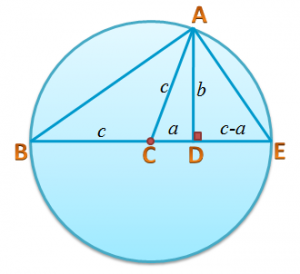Using Similarity to Prove the Pythagorean Theorem
The Pythagorean Theorem is one of the most interesting theorems for two reasons: First, it’s very elementary; even high school students know it by heart. Second, it has hundreds of proofs. The proof below uses triangle similarity.
Pythagorean Theorem
In a right triangle with side lengths and
and hypotenuse
, the following equation always holds:
.
Proof
In the figure above, triangle is similar to triangle
. In similar triangles, the corresponding sides are proportional. It follows that
which is equivalent to
.
Cross multiplying, we have . Adding
to both sides of the equation, we have
, which is what we want to prove.
